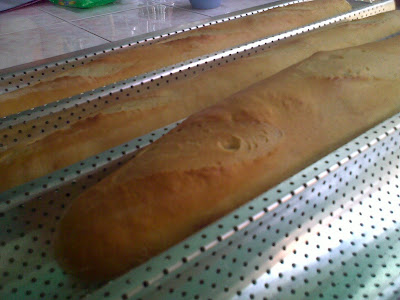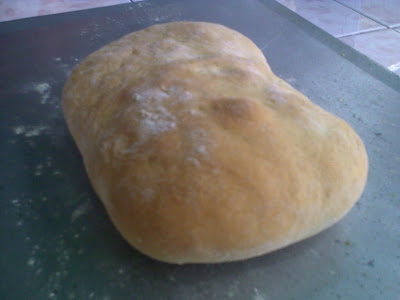Group class, divvying up the dough and other stages of bread making.. I tell them what to do and the students work on them.
They made regular size and mini Cinnamon Rolls.
Letting the Hard Monay proof just a tad bit.
I have to say, this is the simplest dough i have in the lesson but quite so many students love this plain Tasty Loaf Bread.
The September Girls
Putok or Hard Monay
Ciabatta or Flatbread, dough taken from the French Bread. This is what i use to make sandwiches or Paninis.
Just showing you the Siopao after steaming. I was thinking, pwede kaya akong magdala ng All Purpose flour sa New York? Ang itim ng all purpose flour sa US. Only for my baking lessons, and for the Siopaos, other than that, i am fine with the regular APF there. Just thinking. Hindi kaya ako madeport? What about the dough conditioners or softeners? They are pure white like cocaine or heroin? Can i bring this? Anyone?
They made regular size and mini Cinnamon Rolls.
Letting the Hard Monay proof just a tad bit.
I have to say, this is the simplest dough i have in the lesson but quite so many students love this plain Tasty Loaf Bread.
The September Girls
Putok or Hard Monay
Ciabatta or Flatbread, dough taken from the French Bread. This is what i use to make sandwiches or Paninis.
Just showing you the Siopao after steaming. I was thinking, pwede kaya akong magdala ng All Purpose flour sa New York? Ang itim ng all purpose flour sa US. Only for my baking lessons, and for the Siopaos, other than that, i am fine with the regular APF there. Just thinking. Hindi kaya ako madeport? What about the dough conditioners or softeners? They are pure white like cocaine or heroin? Can i bring this? Anyone?














Comments